Try the world's 14 hottest chillies, if you dare
Very hot dinners

blackboard1965/Shutterstock
From social media crazes like the one chip challenge – where people were dared to eat a single tortilla chip infused with the world’s hottest chilli, the Carolina reaper – to super-charged sauces, it seems many of us are fascinated by just how much heat the human body and tastebuds can stand. But what can you actually cook with the planet’s most potent peppers? We look at some of the world’s hottest chillies, from least to most potent as measured by the Scoville Scale, and the dishes they can be used in. Be sure to wear gloves when handling chillies, and use with caution.
Scotch bonnet
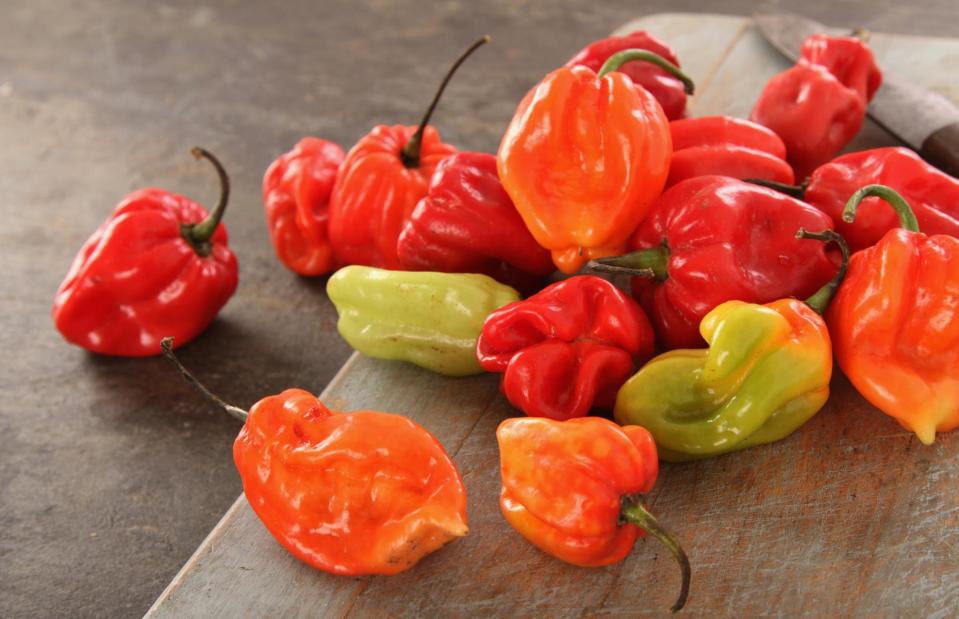
neil langan/Shutterstock
They’re regarded with caution and even feared by some of us but the scotch bonnet is far from the hottest chilli on our list. The red chilli registers as 150,000-325,000 heat units on the Scoville Scale, which was created by American pharmacist Wilbur Scoville in 1912 and rates the potency of chillies based on the concentration of capsaicin, the chemical compound that causes that burning sensation. That puts it in the ‘spicy hot’ category and around 55th on the scale – yet it’s still roughly 40 times hotter than a jalapeño.
Scotch bonnet
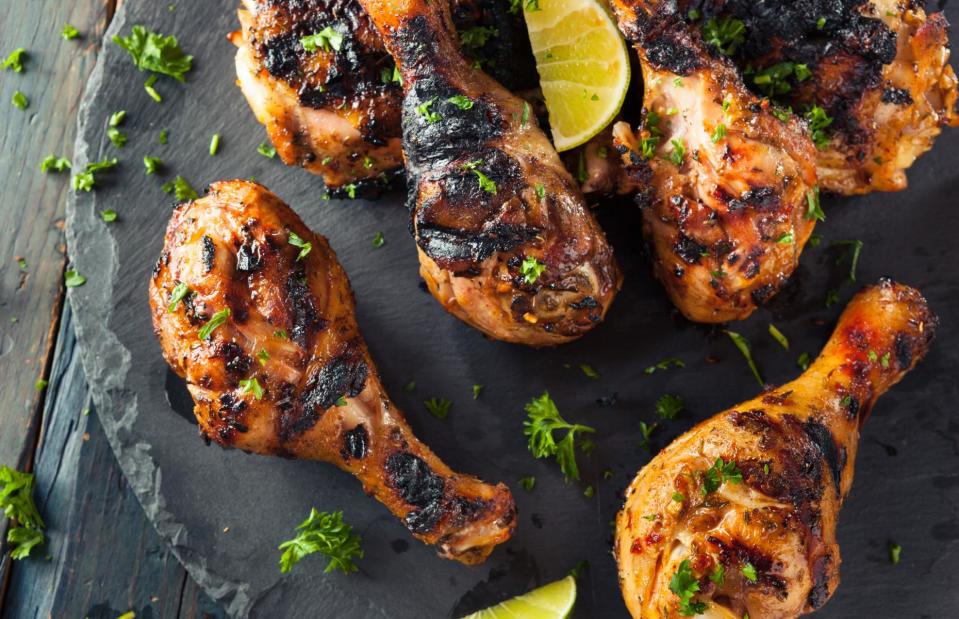
Brent Hofacker/Shutterstock
Scotch bonnet chillies are relatively easy to buy in many grocery stores and supermarkets, and can bring a sweet and fruity tomato-like quality – and, of course, a thwack of heat – to a range of dishes, particularly complementing Caribbean cuisine. It’s a key ingredient in jerk chicken, originating in Jamaica and traditionally served very spicy – though you can start with a smaller amount of chilli and build up from there.
Habanero
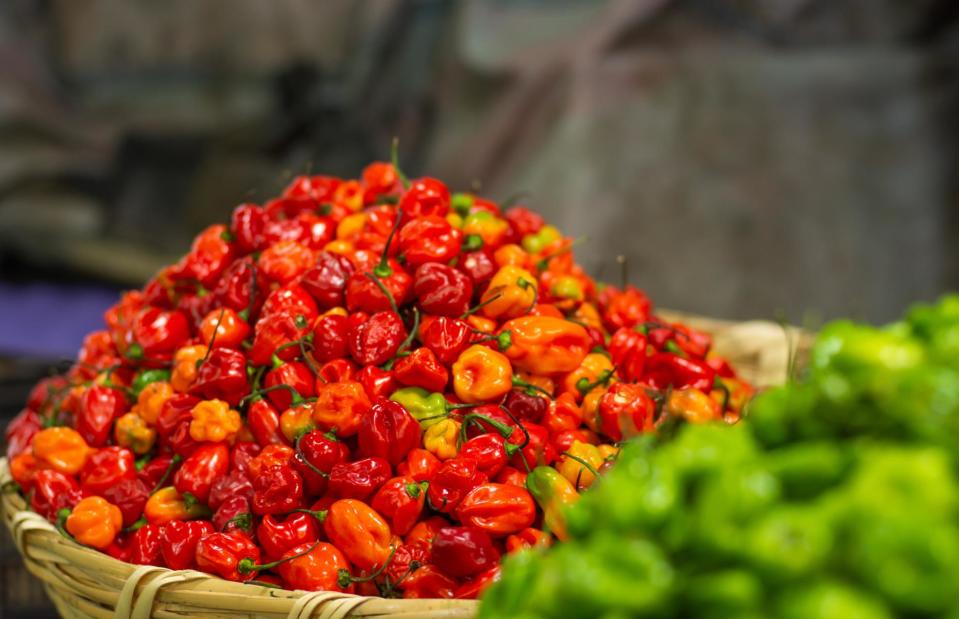
Ernesto chi/Shutterstock
There are several types of habanero peppers, with the habanero francisca or francisca orange registering as the hottest of the lot with 300,000-500,000 Scoville units. It falls into the ‘very hot’ category (behind extreme, fiery and really hot) and, while there are a few dozen chillies that are technically hotter, this is considered at around the limit of what most people can handle. It’s originally from Peru’s Amazon region but is popular worldwide thanks to its fruity, floral, citrusy qualities.
Habanero
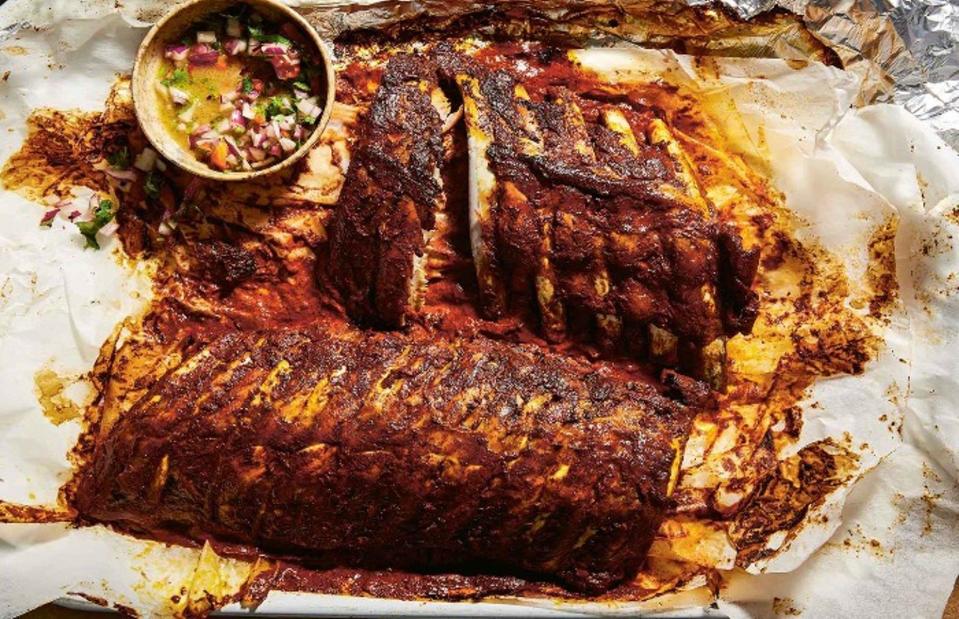
Robert Billington and Adam Wiseman/Hardie Grant
Despite its almost prohibitive levels of heat, habanero is among the most widely used chillies on our list and features in many of the hot sauces and salsas we buy. It’s also used in our recipe for finger-licking sticky ribs, a take on traditional cochinita pibil (marinaded, slow-roasted pork) from the Yucatán region of Mexico.
Bhut jolokia
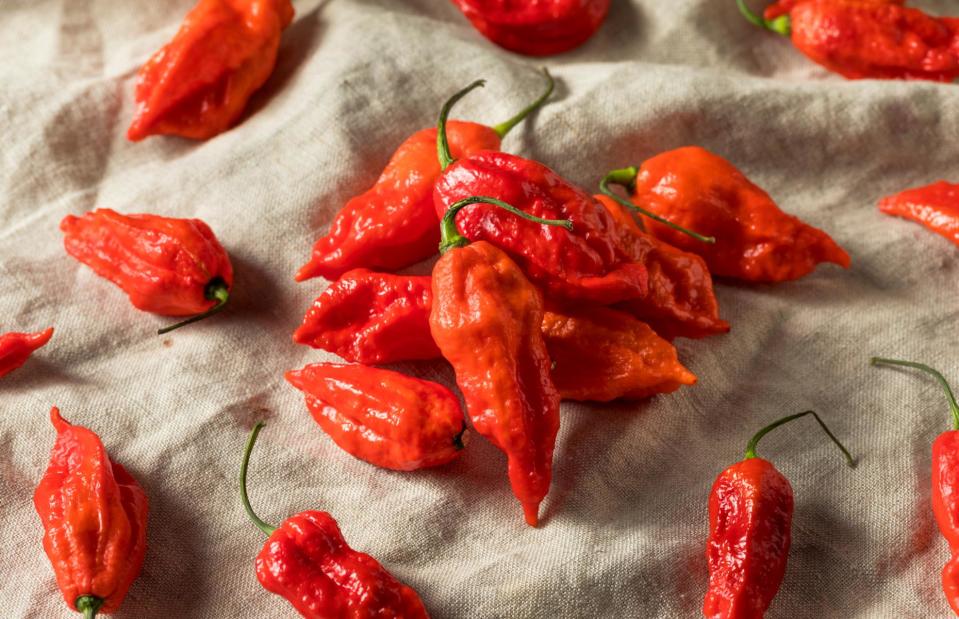
Brent Hofacker/Shutterstock
The bhut jolokia or ghost pepper is famously fiery, yet actually only comes in at number 21 on the Scoville scale. It’s still pretty potent, with 600,000-1.04 million Scoville heat units, and was named the world’s hottest pepper in 2007. Cultivated in northeast India, it’s widely grown in the UK and relatively easy to get hold of, either as ready-to-use peppers or seeds. As with all of the peppers on our list, always use gloves (and possibly protective goggles too) when preparing and use just a tiny amount.
Bhut jolokia
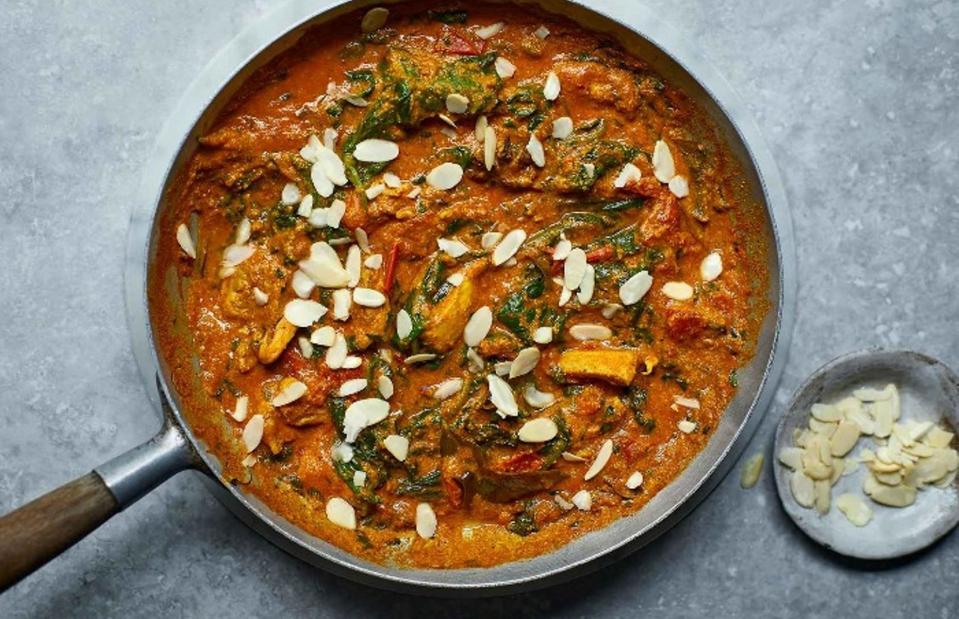
HarperNonFiction/loveFOOD
This is a versatile chilli that can be used to bring an intensely fruity and slightly sweet spiciness to various dishes. It’s a key ingredient in phaal curry, known as one of the world’s hottest. Those without asbestos mouths, throats and stomachs should probably begin their ghost pepper journey by using them to infuse oils or in hot sauces.
7 pot
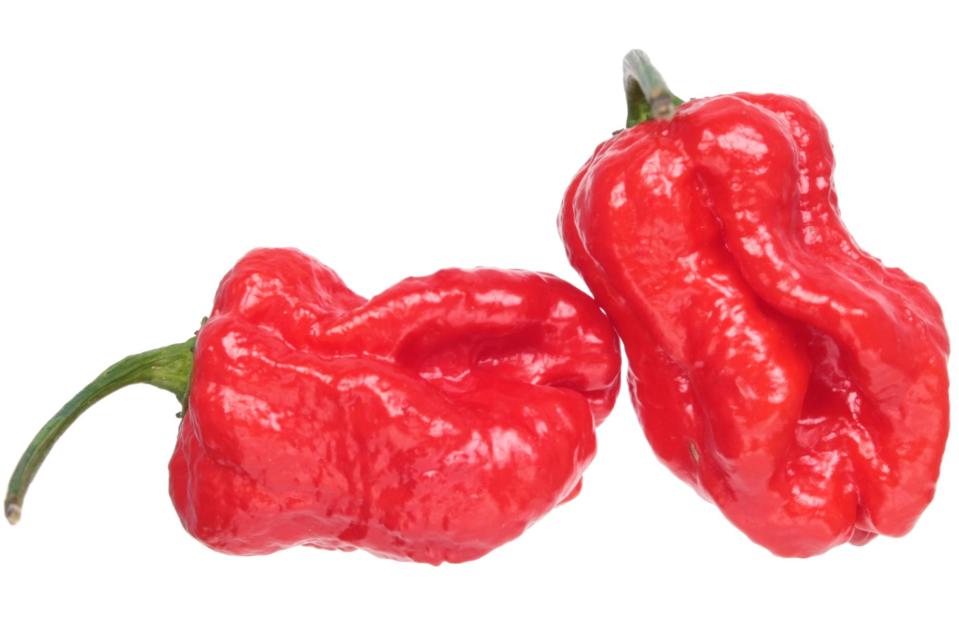
Kazakov Maksim/Shutterstock
The 7 pot from Trinidad has spawned many imitations (or variations), each seemingly hotter than the last. The original is now officially the 17th hottest chilli in the world, but that doesn’t mean you can just bite into one of these with abandon. The margins are pretty narrow, and this one comes in at 500,000-1.1 million Scoville units (which puts it between ‘really hot’ and ‘fiery hot’).
7 pot
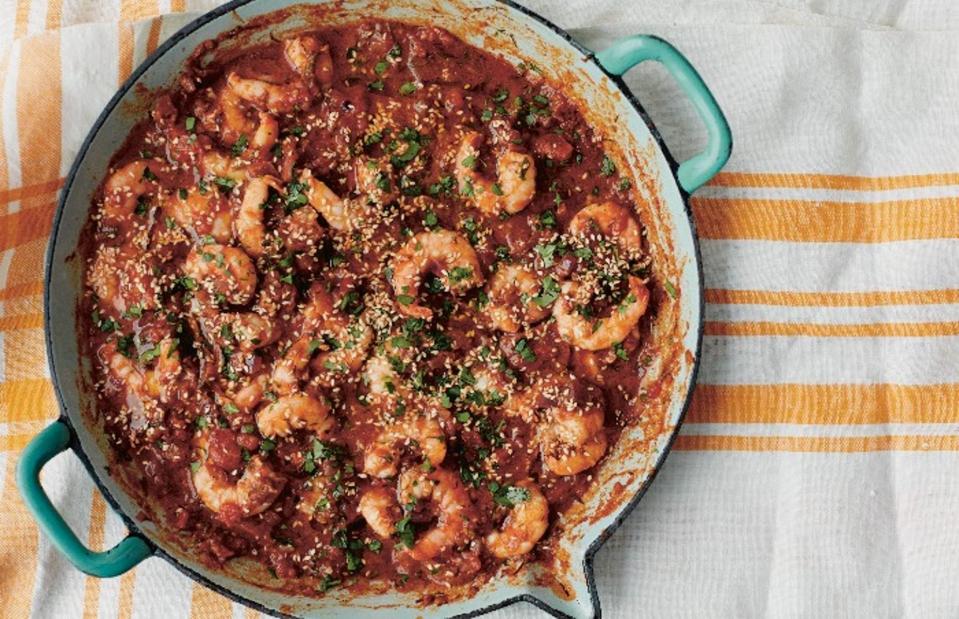
Matt Russell/Bloomsbury
This shiny, rotund little pepper is so-named because one is considered plenty to add heat to seven pots of stew, curry or casserole. It’s apparently used in military grade tear gas in Trinidad, and is added to marine paint designed to deter barnacles. So the smallest, skinniest slice will be ample to bring fire to a one-pot dish.
Bedfordshire super naga
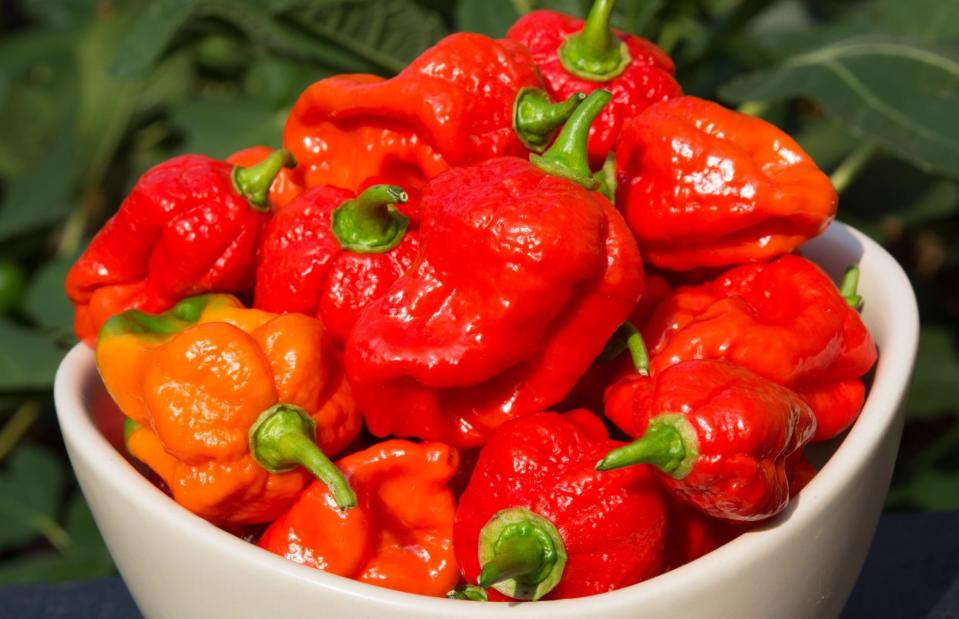
The Oxfordshire Chilli Garden/Alamy Stock Photo
Created by the UK’s largest chilli grower, Salvatore Genovese, on his farm in Blunham, Bedfordshire, England, the super naga became the hottest chilli sold on the British high street when it was unveiled in 2012. The grower said he developed it to feed the “hunger” some people have to find (and try) ever-hotter chillies. The super naga registers at 500,000-1.12 million Scoville units and comes in at 16th on the scale. (Pictured are the similar and now more readily available Spanish naga chillies, 18th on the scale at 600,000-1.09 million units.)
Bedfordshire super naga

Louise Hagger/Hardie Grant
The chillies were stocked at Tesco, whose buyer Gethyn Formby warned they’re “not for the faint-hearted and should be tasted with extreme caution”. This is heat that creeps up on you, taking around 30 seconds to truly kick in. They have a sweet, fruity taste that works well used sparingly in Bangladeshi dishes like curries, biryani or panta ilish – cooked rice that’s soaked in salted water and served with spicy fried fish and topped with slices of fresh chilli.
Naga viper
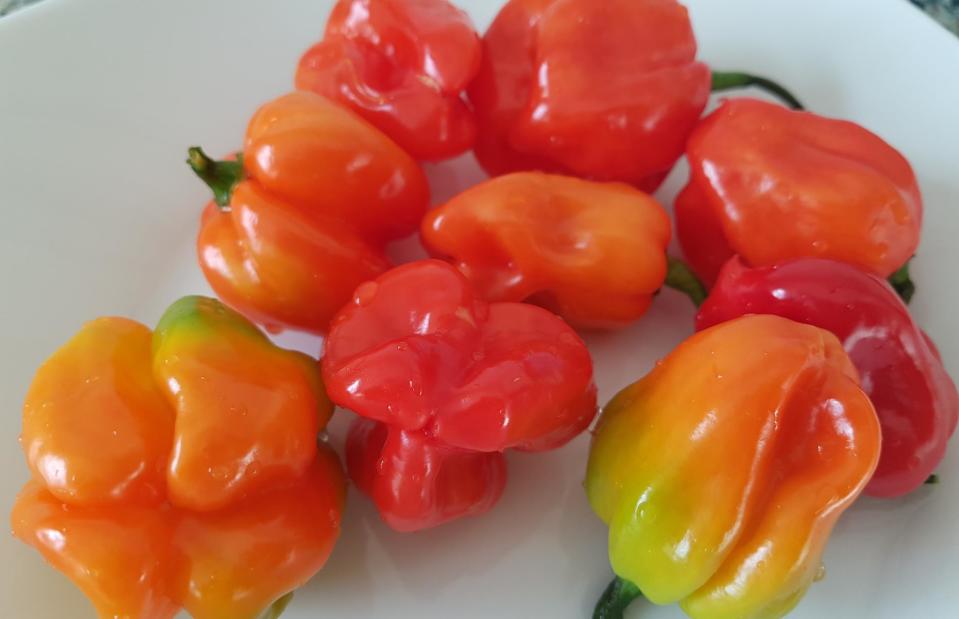
nokfarsai/Shutterstock
What do you get when you cross three of the world’s hottest chillies? An unbelievably fiery pepper that’s 270 times hotter than a jalapeño. Naga viper is a three-way hybrid created from naga morich, Trinidad scorpion and bhut jolokia (ghost pepper). Briefly named the World’s Hottest Chilli in 2011 by Guinness World Records (it’s now ninth on the Scoville Scale), it was created by British chilli farmer Gerald Fowler of The Chilli Pepper Company (which also produced the Katie, a hotter chilli further down our list).
Naga viper
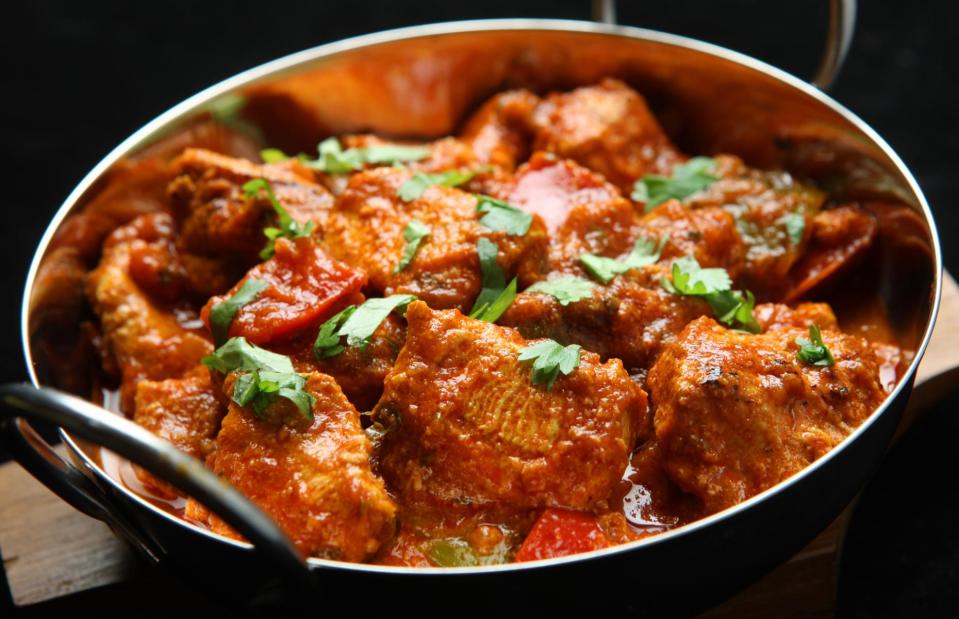
Joe Gough/Shutterstock
The naga viper has a Scoville score of 600,000-1.38 million. It’s a slow burner, which makes it a good choice in homemade hot sauces, or dehydrated and used in a rub or super-potent spice blend (make sure you label it carefully!) A very, very small amount adds depth and complexity to a variety of dishes that lend themselves to spice, including several curry recipes. Because it shares some similarities with bhut jolokia or ghost pepper, try it in place of that chilli in a bhut jolokia murgh, a classic chicken dish from northeast India.
Komodo dragon
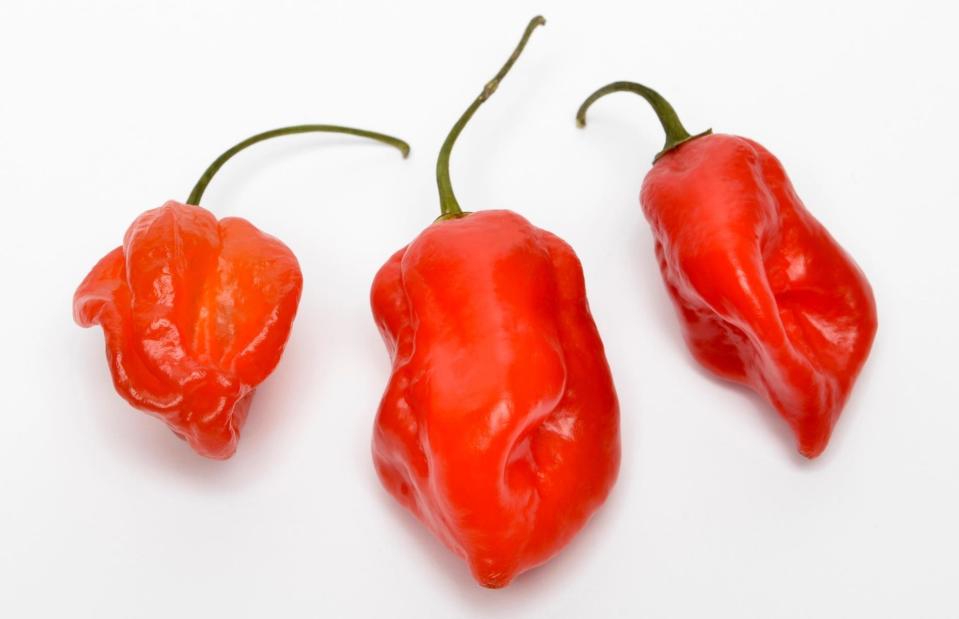
Antony Nettle/Alamy Stock Photo
Chilli farmer Salvatore Genovese, who produced the super naga, released this even hotter variety in 2016. The British-grown chilli has 500,000-1.4 million Scoville units and is sold in UK supermarkets. Tesco’s chilli pepper buyer, Eleanor Mansell, said other varieties sold by the chain “pale in comparison”. She described the Komodo dragon as having a “wonderful hot fruitiness” that reveals its full fiery force after about 10 seconds.
Komodo dragon
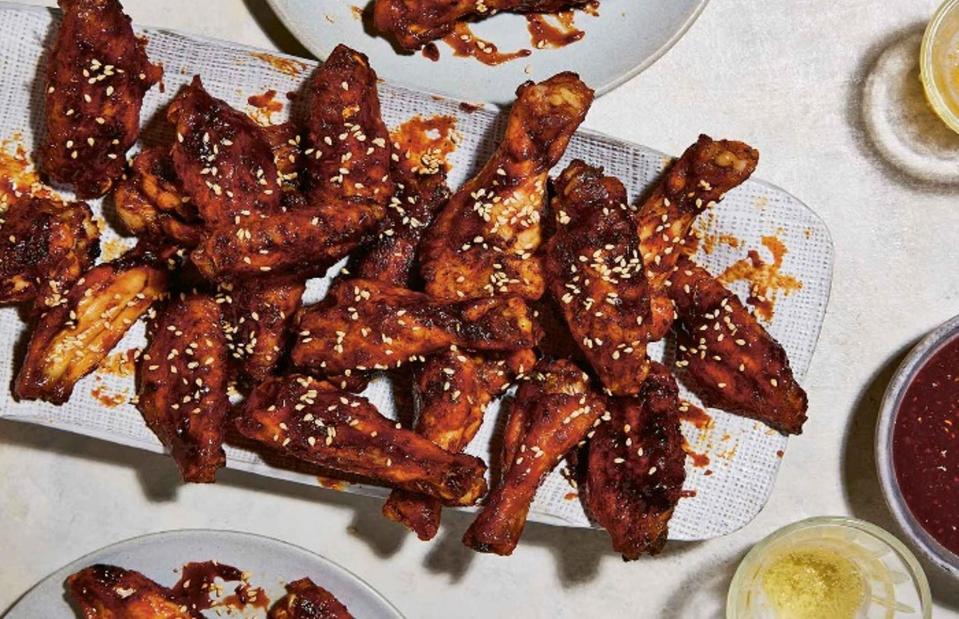
Louise Hagger/Hardy Grant
As it's relatively easy to buy one, it's a great chilli to experiment with. Though, like the 7 pot varieties, one chilli pepper is enough to add heat to several casseroles or stews. Slice off a sliver and finely chop to add an extra, flying kick to salsas, tomato-based sauces and stir-fries. It also works well in marinades for sticky ribs or wings.
Butch T
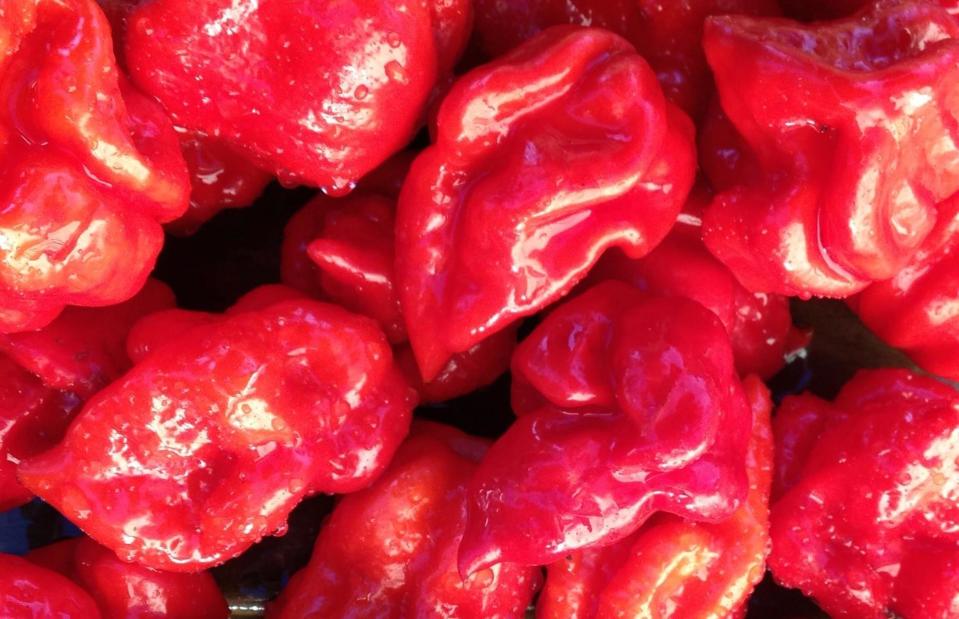
TheChilliFactory/Facebook
Also known as Trinidad scorpion Butch Taylor, this former world record holder (from 2011) has 80,000-1.46 million Scoville units – pretty much guaranteed to leave a sting in your throat. The strain was propagated by American Butch Taylor (hence the name), who sold the seeds online. They were bought by Australian sauce company Chilli Factory, which grew the pods and discovered they were record breakers.
Butch T
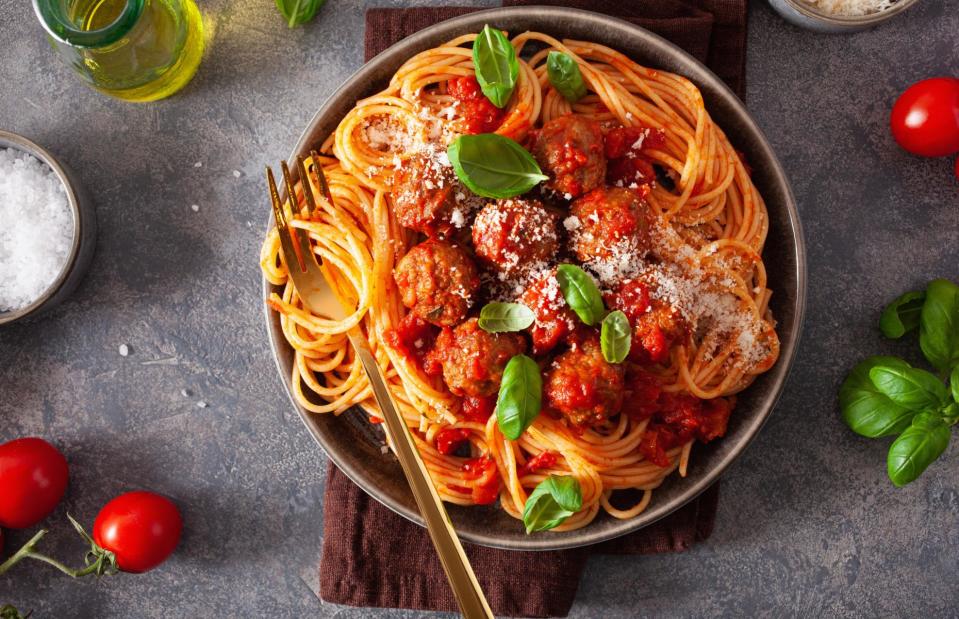
Olga Miltsova/Shutterstock
A new breed of hotties has pushed the Butch T back into sixth place, though it’s still formidably hot. You can try it in the Chilli Factory’s Scorpion Strike sauces, which themselves are best used very sparingly in marinades, stir-fries and Mexican dishes. The company also sells a paste that’s made with 80% chillies and can be used as a base for your own hot sauce. Use a dash of the sauce or a fairy’s fistful of chopped fresh chilli in a classic spaghetti and meatballs recipe.
Trinidad 7 pot Primo
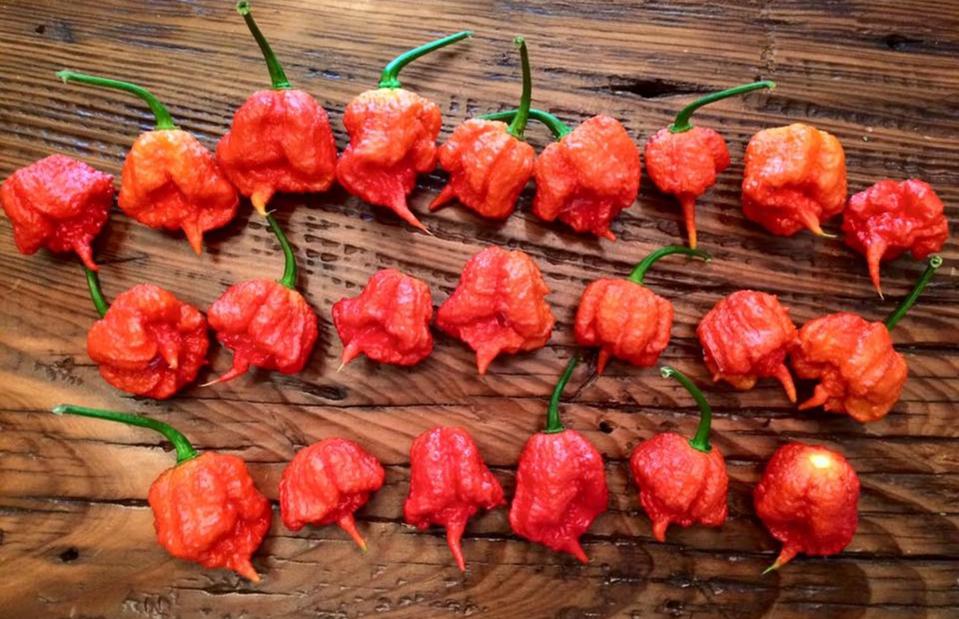
primospeppers/Facebook
Rock musician and horticulturist Troy Primeaux (AKA Primo) from Louisiana created these powerful chillies by combining the seeds of original 7 pot and naga morich varieties. The resulting 7 pot Primo has a distinctive lumpy, distorted shape and skinny tail. It registers just below 1.5 million Scoville units and comes in fifth on the Scoville Scale, with Primeaux’s company Primo Peppers describing them as 300 times hotter than jalapeños.
Trinidad 7 pot Primo
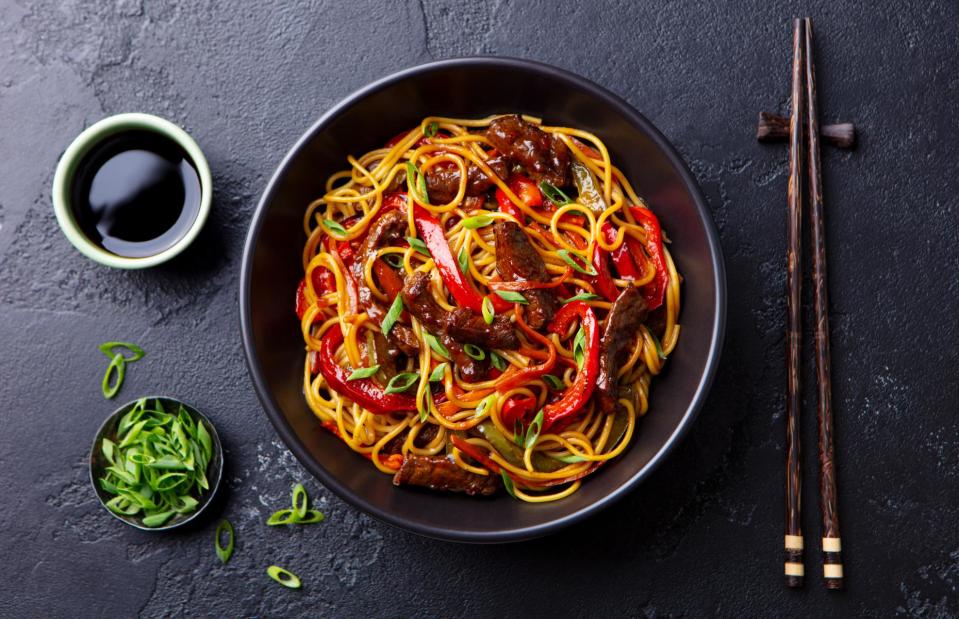
Anna_Pustynnikova/Shutterstock
The company uses them to create a super-hot sauce. The chillies themselves aren’t widely sold, with seeds available in the US only via Primo Peppers. If you do manage to get some, their fruity, floral and lightly citrusy notes can bring a unique taste to a variety of dishes, provided you use the teeniest amount (otherwise, the heat will strip away all other flavours – and possibly your tastebuds).
Katie
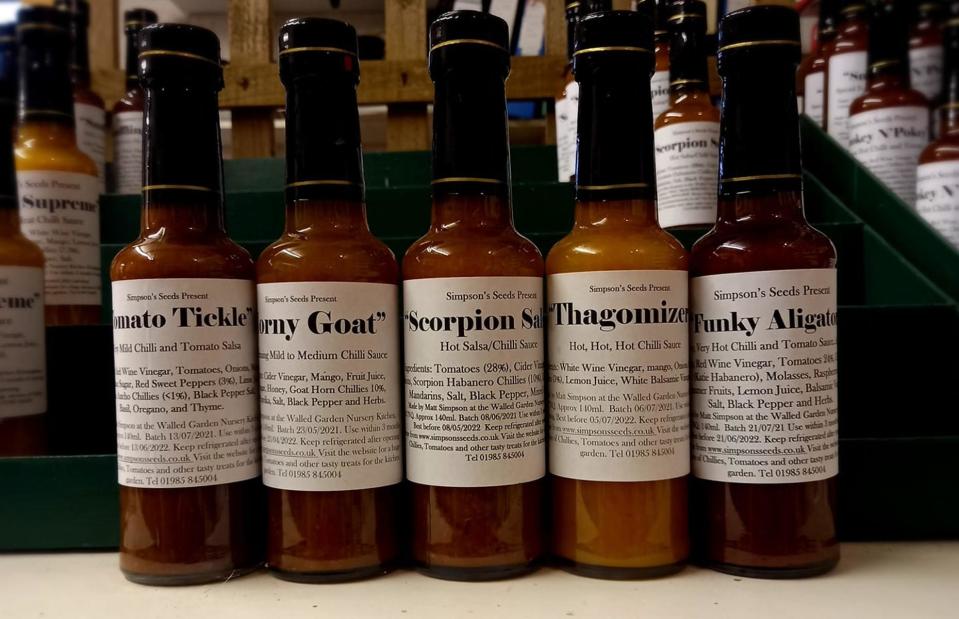
SimpsonsSeeds/Facebook
Katie, or 7 pot Katie, is officially the world’s fourth hottest chilli with 1.2-1.6 million Scoville units. It (or perhaps she) was cultivated by Matt Simpson in Wiltshire, England. Simpson said its heat is due to being stressed during the growing process – he shouted at the plants, denied them water and even bit the chillies so they would produce more heat as a defence. It’s named after one of his daughters and used in one of his hot sauces, the Funky Alligator. (Its sister, Lucy, comes in at number 10 on the scale.)
Katie

Fedorovacz/Shutterstock
We wouldn’t recommend biting into one of these chillies, either while it’s still growing or once picked. It does have a pleasant fruity taste beneath the initial chilli hit, though. One of the best ways of cooking with Katie is to use (as with all of these potent peppers) just a teeny amount – we’re talking a gossamer-thin slice – to add some bite and slightly smoky fruitiness to a rich tomato sauce for pasta or pizza.
Chocolate 7 pot

Kyryl Polyatskiy/Shutterstock
You’ve probably heard of chilli-laced chocolate but, unless you’ve tried an extreme version, it doesn’t come close to the chocolate 7 pot or 7 pot douglah, the hottest of its type at up to 1.8 million Scoville units. Its name comes from the fact its skin matures to a dark brown or deep purple colour. These chillies, from Trinidad, are relatively rare and considered to be among the nicest of the world’s hottest peppers.
Chocolate 7 pot
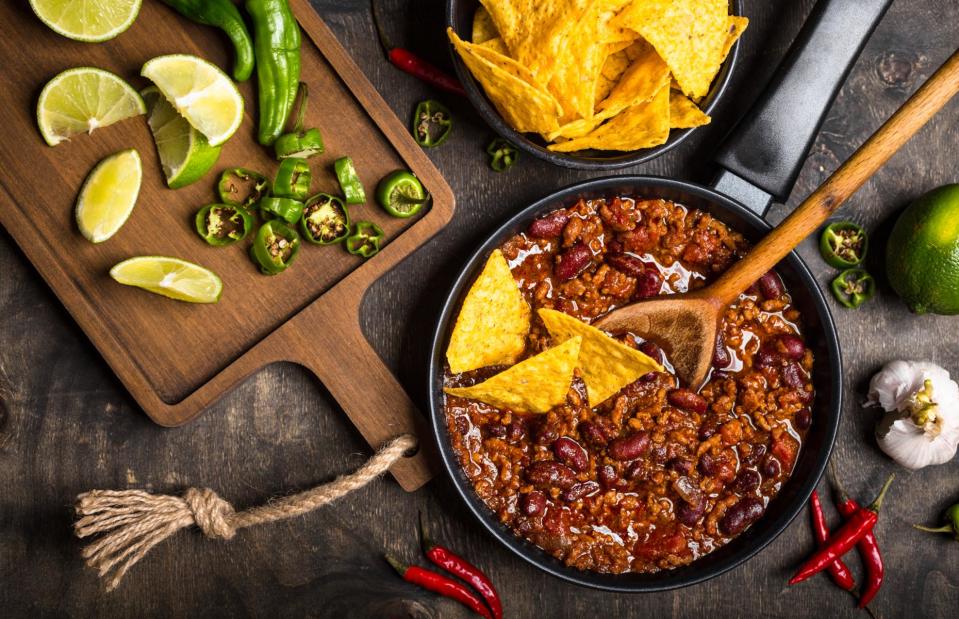
Elena Eryomenko/Shutterstock
They are sold online and you can also buy seeds to grow your own. If you can get hold of some, it will bring a fruity, sweet and nutty flavour when cooked into a variety of stews, sauces and soups. A mere sliver, finely chopped, is enough to throw into a big saucepan of soup or a batch of our chilli con carne.
Trinidad moruga scorpion
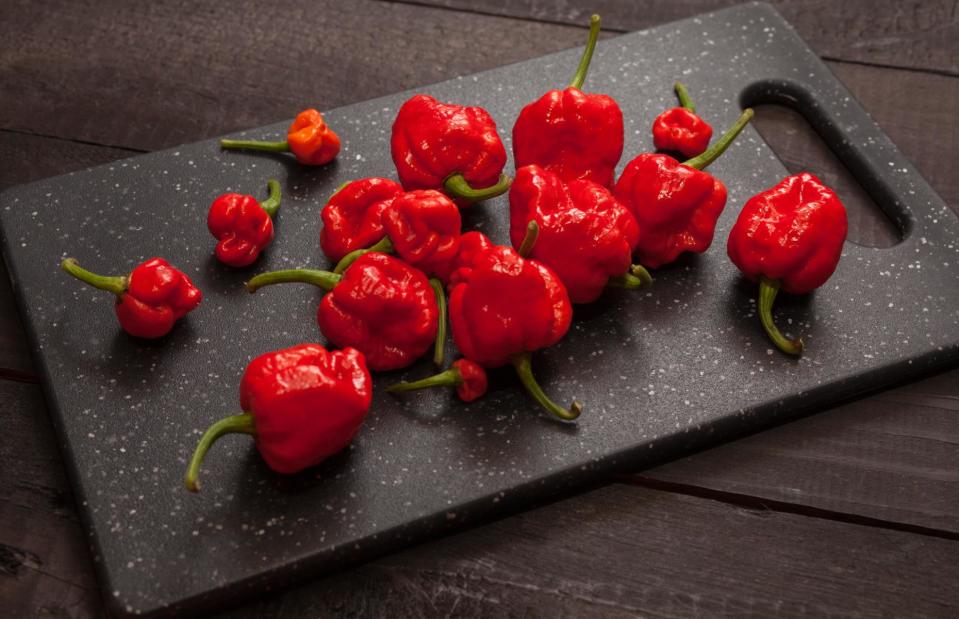
blackboard1965/Shutterstock
Thought to be the first chilli to venture past the two million Scoville units mark, the Trinidad moruga scorpion was identified as the world’s hottest variety in 2012 by experts at New Mexico State University’s Chile Pepper Institute. “You take a bite. It doesn't seem so bad, and then it builds and it builds and it builds,” said the institute’s director Paul Bosland. “So it is quite nasty.” (The similar Trinidad red scorpion comes eighth on the scale with 500,000-1.4 million Scoville units.)
Trinidad moruga scorpion

Elena Veselova/Shutterstock
That doesn’t mean it has no place in the kitchen, though. As with all of these red-hot peppers, caution is advised. But, when you do want that extra kick, the Trinidad moruga scorpion has a fruity sweetness and is great for adding fiery depth to homemade burgers and barbecue sauce. Use just a fraction of what you might normally – where a recipe calls for one whole chilli, for example, we recommend chopping up one thin slice.
Carolina reaper
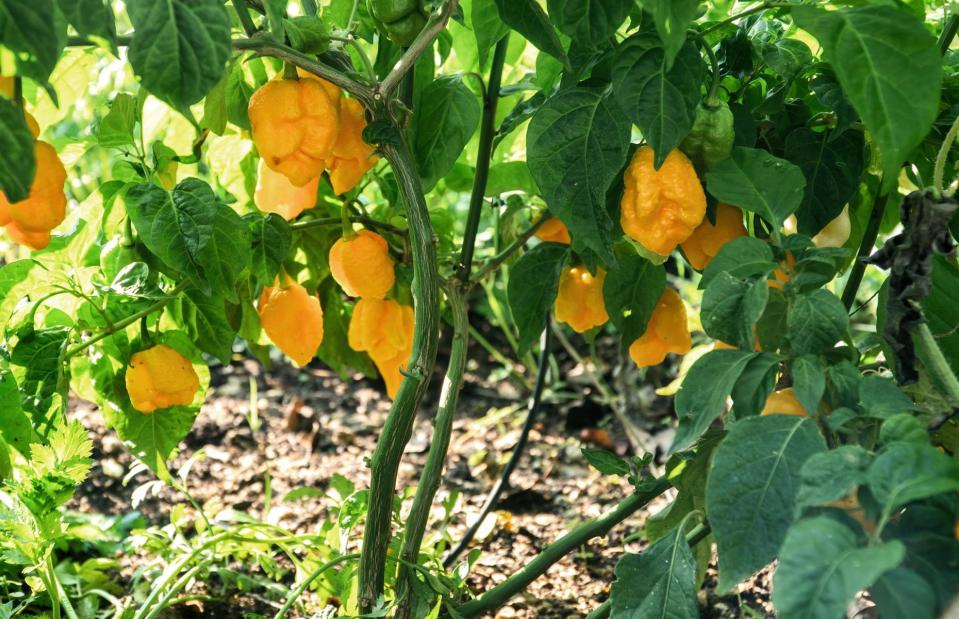
Simone Sechi Productions/Shutterstock
Carolina reaper, created by Ed Currie of the PuckerButt Pepper Company in South Carolina in 2013, is officially the world’s hottest chilli with 1.5-2.2 million Scoville units. Unlike most peppers, which can sneak up with their heat, the Carolina reaper kicks in immediately – Currie has described eating one as “like licking the sun” and, understandably, doesn’t recommend biting into a whole one. They’re often used in commercial salsas, and PuckerButt uses it in its “hottest and most dangerous” sauce, Reaper.
Carolina reaper
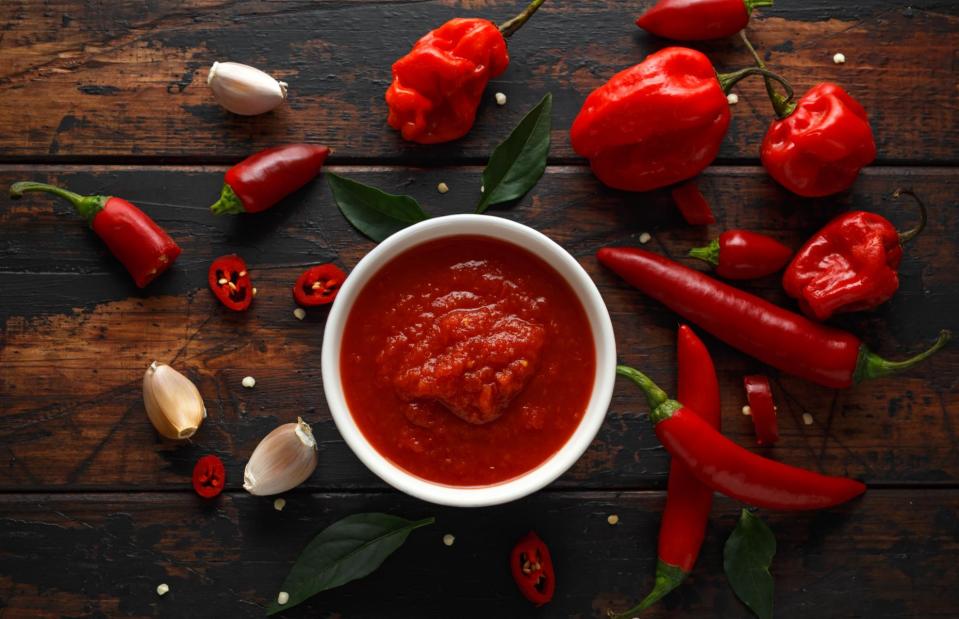
DronG/Shutterstock
If cooking with it at home, use very sparingly to make your own hot sauce or salsa, or to dial up the heat in dishes from chilli con carne to stir-fries. James Beard Award–winning chef and Southern cooking specialist Mashama Bailey says Carolina Reaper also has an unexpected sweetness, though she recommends wearing gloves when handling the spicy peppers – and warns that a little really does go a long way.
Dragon’s breath
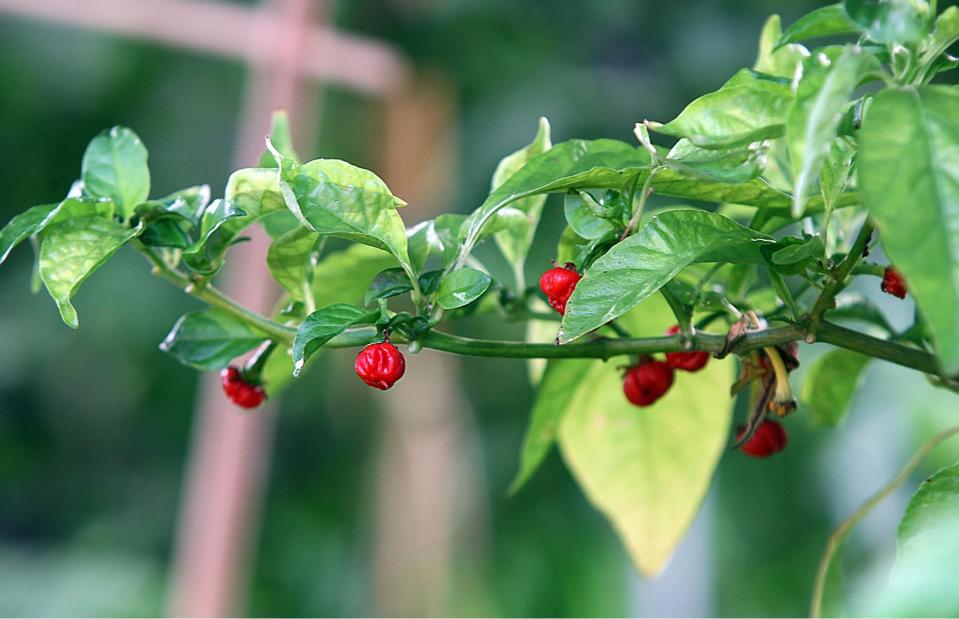
Trinity Mirror/Mirrorpix/Alamy Stock Photo
Dragon’s breath, cultivated in the UK and unveiled at the 2017 Chelsea Flower Show, is said to be 200,000 Scoville units hotter than the Carolina reaper at 2.4 million on the scale, though that hasn’t yet been verified and it hasn’t entered the official scale. The same goes for Pepper X, created by the man behind the Carolina reaper and apparently hitting 3.18 million Scoville units. They have been used in (extremely) hot sauces and a next-level version of the One Chip Challenge – The Duel, featuring two tortilla chips laced with Pepper X chillies.
Here’s everything you need to know about cooking with chilli


